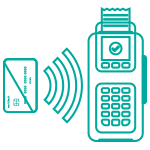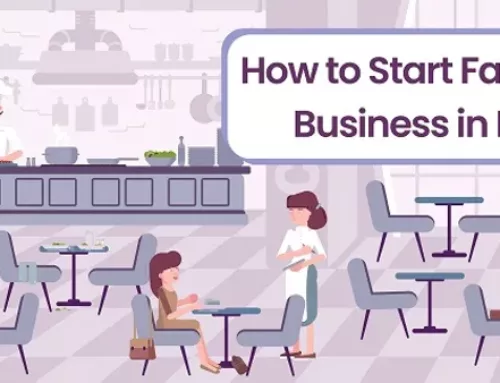Cloud kitchens are the new way of running a restaurant. They have been around for quite some time, but they still haven’t reached the popularity that they deserve.
If a cloud kitchen doesn’t have its own online ordering website and app, it can still accept orders via the various meal delivery platforms. Since these online restaurants rely on food ordering systems like Swiggy, Zomato, and others for the majority of their revenue, a Point of Sale system that can accept orders from various sources is needed. This would save you the time and effort of manually adding and calculating orders from various ordering providers at the end of the day.
If you are looking to start a cloud kitchen and want to know how it works, then this article is for you! In this article, we will go over everything from what is a cloud kitchen, why you should start one, and how to do so.
How to Start a Cloud Kitchen (9 Simple Steps)

1. Assemble a team
Once you’ve decided to start a cloud kitchen, assembling the right team is crucial. The success of your business is going to depend on how well you work together as a group. A good fit is important, but don’t be afraid to hire people who are not exactly what you envisioned at first glance. Be open-minded and think of ways they could grow into their role over time.
Hiring the right people can be tricky; there are many factors that go into finding the perfect employee or contractor for your business venture. We recommend being thorough when vetting candidates—that means conducting thorough interviews, doing background checks and reference checks, etc.—but also keeping in mind that they may not always have all the skills or experience required at first glance (or even second). As long as they’re willing to learn new things and improve their skill set without any hesitation, consider them an asset!
2. Picking a location
You want to pick a location that is easily accessible for your customers, suppliers, and staff. You’ll need to be able to drive your trucks in and out of the kitchen without clogging up traffic or making a lot of noise. This can be difficult if you’re located in an industrial area, so it’s better if you choose a spot that’s central but doesn’t have any residential buildings nearby (such as an abandoned store).
3. License and registration
-
The cloud kitchen should be registered with the food and drug administration.
-
The cloud kitchen should have a license to operate.
-
The cloud kitchen should be registered with the local government.
-
The cloud kitchen should be registered with the state government, if applicable (different states have different laws regarding this).
-
The cloud kitchen should be registered with the central government, if applicable (different states have different laws regarding this).
4. Designing the kitchen
Designing your kitchen is a process that involves many factors, including the type of food you will be serving. For example, if you’re making fast food like burgers and fries, then it makes sense to have an assembly line where people can easily place orders and get their food quickly.
In contrast, if you’re making gourmet pizzas or baked goods from scratch (like bread), then it would probably make sense to have some space for baking these products rather than just cooking them quickly in a fryer.
In short: design based on what kind of food you plan on serving!

5. Choosing the right equipment for your cloud Kitchen
The right equipment is one that is easy to maintain and clean, easy to use, and durable. It should also be easy to store and transport. A lot of people in the food industry will tell you that their dream is to have a restaurant with white walls and stainless steel equipment. But this can come at a cost: it will be expensive and challenging for someone who isn’t an expert chef or cookery teacher.
Also, read –What is a Cloud Kitchen? [Concept & Business Model]
6. Setting up a payment gateway
Setting up a payment gateway is the first step toward taking payments for your cooking services. It can be done in just 2 steps:
-
Choose a payment gateway provider that supports online payments and allows you to accept credit cards from customers.
-
Integrate the API keys with your billing system.
Payment gateways use two-factor authentication for security purposes, meaning that when setting up the gateway, you will have to provide additional personal information like your name, address and phone number before you can start accepting payments through them.
7. Preparing the menu
When you’re choosing your menu, there are a few things you’ll want to keep in mind. The first is balance. A well-balanced meal will have a protein, such as meat or fish, and some kind of carbohydrate (rice, pasta, or potatoes) and veggies on the plate.
You’ll also want to make sure that each dish is balanced against all of the other dishes on your menu so that they complement each other rather than compete with one another.
Creating a fresh and interesting menu can be difficult when you only have four ingredients available. We recommend taking advantage of all eight items by turning them into different types of food–like by making sauces out of them or adding them on top instead of mixing everything together into one big pile (this way you won’t end up with mushy rice).
For example: instead of having plain white rice as an accompaniment for grilled chicken breast, serve it alongside sautéed mushrooms and onions seasoned with salt & pepper; then top both off with freshly grated parmesan cheese!
You should also consider seasonal changes in weather when deciding what dishes will go best with others.

8. Maintaining quality control
Quality control is a crucial part of the food service industry, and the cloud kitchen business model has its own set of rules that must be followed to ensure quality.
● Consistency: Your customers will expect to receive the same experience every time they visit your establishment. If one day they receive excellent service, then return to find it lacking, they will be disappointed. This can affect their opinion of your food as well as your brand as a whole.
It’s important that all aspects of quality are consistently enforced throughout all locations so that customers know what to expect when visiting one location or another.
● Hygiene: The health department requires certain standards of cleanliness in order for any kitchen facility to operate legally (and safely). These include things like hand washing stations near each sink or place where food preparation occurs; garbage disposal units properly working; refrigerators set at appropriate temperatures; no leaking from drains or pipes anywhere in sight—just some examples!
For this reason alone, it’s critical that you keep up with proper cleaning practices, even more so than usual, because if something goes wrong at any point during the operation process, it could result in fines or loss of licenses which would obviously be devastating for any type small business owner looking into starting something such as this venture.
Also, read –What licenses are needed to start a restaurant in India
9. Connecting with customers
When it comes to connecting with customers, there are myriad ways. You can use social media like Twitter or Facebook to keep your followers up-to-date on the latest happenings in your kitchen. You can also set up a website and put all the information about your cloud kitchen there.
If you want to make things easy on yourself, you could post an 800 number or even provide a mailing address for anyone interested in finding out more about how they can eat food prepared by you at their home or business location.
Another great way of connecting with customers is through newsletters and blogs that are sent out regularly, so people know what’s going on in your cloud kitchen world! Video content has been shown to boost conversions significantly because it allows prospects to get more information from someone rather than just reading something on paper like a brochure would normally provide them with – especially if the person speaking sounds friendly (which most people will do!).
IVEPOS is now serving India’s fast growing cloud kitchen segment
Cloud Kitchen is currently the new fast-growing segment in India. Cloud kitchen is primarily a restaurant kitchen that accepts incoming orders only through an online ordering system and offers limited (or) no dine-in facility. Enterprise cloud kitchens can have a central kitchen and many satellite kitchens all throughout the city.
Currently, there are not many android POS providers that can help manage this complexity. Intuition’s android based IVEPOS that serves the niche restaurant industry, with its new online food delivery integration like swiggy, zomato, etc., and stock transfer features will fill in this need to serve this new fast-growing niche segment.
Final words
In a nutshell, starting your own cloud kitchen is not a one-time effort. It requires hard work and dedication. But once you start making profits and are able to pay back the initial investment, it will be all worth it!






![What is Stock Audit? [How to Perform It & Its Advantages]](https://ivepos.com/wp-content/uploads/2022/12/Blog_Image_700x400_68-500x383.jpg)


![How to Start Catering Business [Ideas, Plan & Item List]](https://ivepos.com/wp-content/uploads/2022/09/8b78cc_08060cb445e048ecb631cb39802cb5f7_mv2-500x383.webp)
Leave A Comment